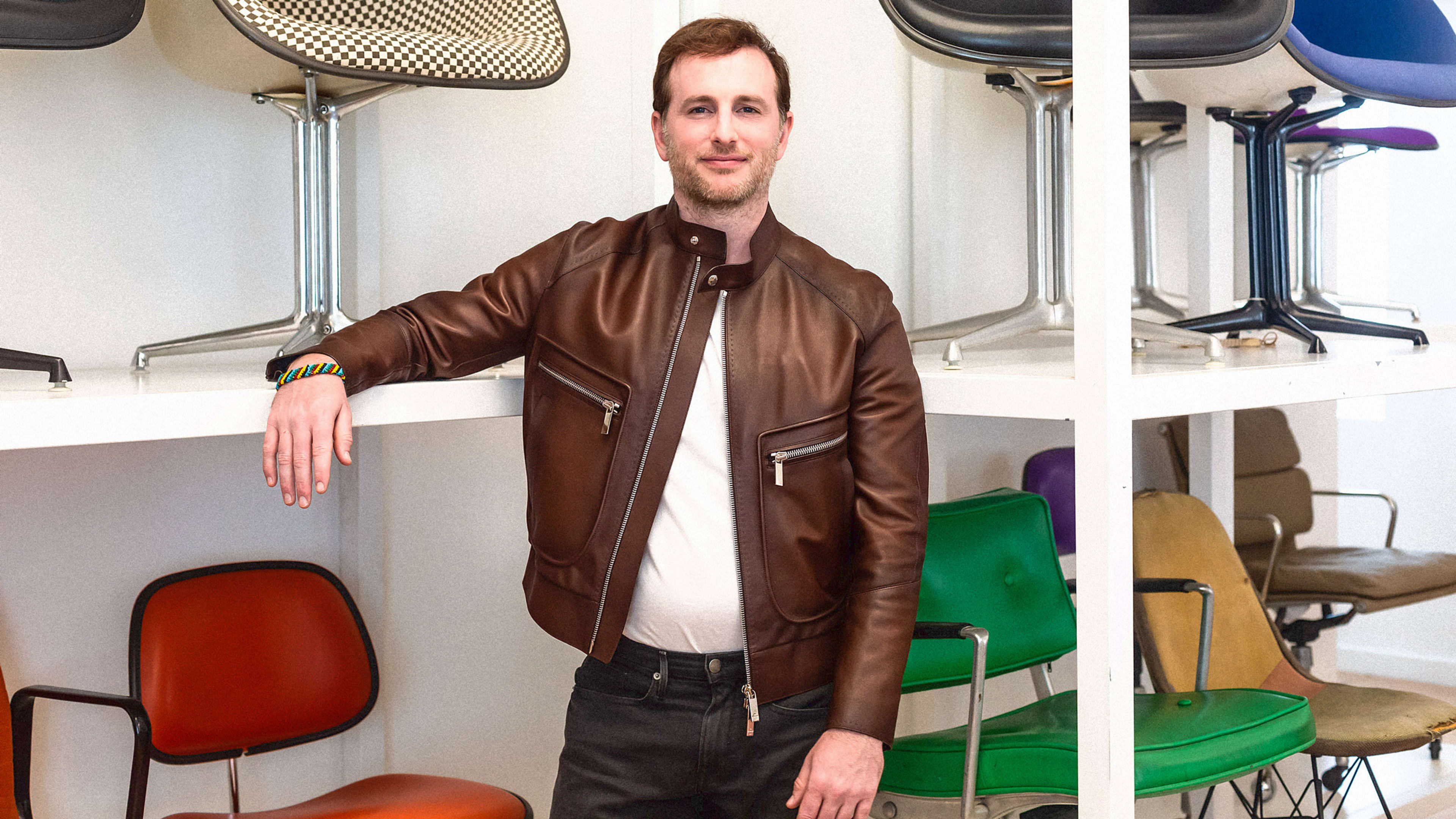When Llisa Demetrios was 12, she told her grandfather that she wanted to be a sculptor. He didn’t push back and urge her to pursue a safer, more stable career. Instead, she recalls, he gave her a memorable piece of advice: “You need to be able to use every tool in your studio as well as if not better than the person you hire—or you won’t know if they are doing a good job.”

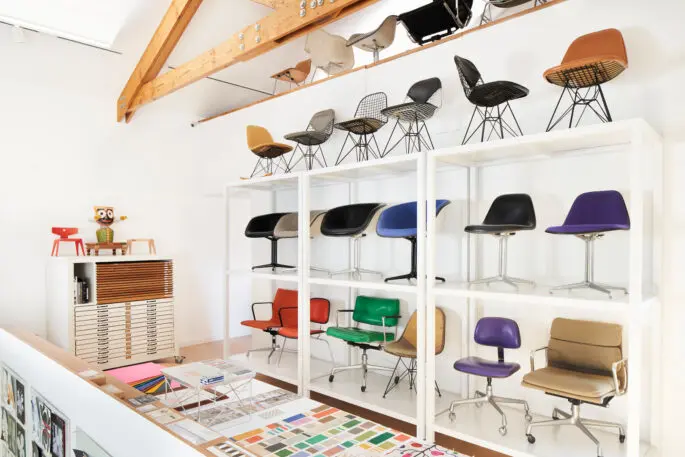
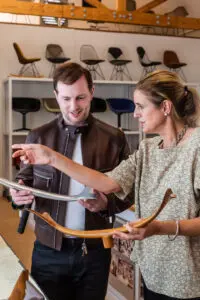
Gebbia knew he wanted to fund the nonprofit after meeting Demetrios and going on a few retreats with the Airbnb design team to the Eames Ranch, a 27-acre estate in Petaluma, California. Gebbia attributes the Eameses’ design with charting the course of his life as well as his massively successful business, long before he met up with their youngest granddaughter.
“I became enamored with their values, with their ethos: Create the best design for the most people for the least price. Democratize design for the masses,” Gebbia says. “They really left a gift for us, for the world. And the whole notion of starting the Eames Institute was to share that gift with everyone.”
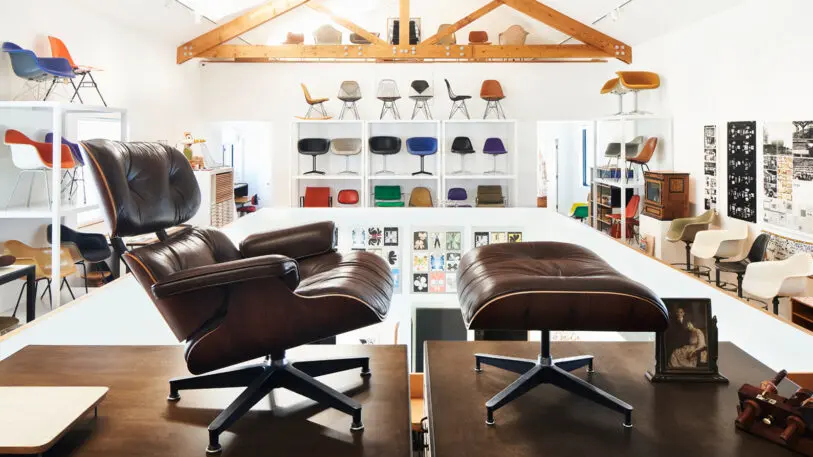
Process over Products
Many people are already familiar with Eames objects, as Demetrios explains; what they might not understand is the Eameses’ process. Charles and Ray worked together in an office that was also their lab; they both developed products and tested them, long-term, to understand how they could be improved. If a chair cushion began to wear out in one spot—even over the course of years—then they knew that future iterations of the chair would need a reinforced cushion.
“They were always exploring these ideas, taking it further, and seeing what could be mended, improved upon . . . [trying] to make it better,” Demetrios says. “They were always pushing the envelope on these ideas and never stopping the learning.”
Their painstaking creative process also necessitated that Charles and Ray develop their own technological tools. They used to say if your only tool in your tool box is a hammer, then you’re going to try to solve every problem with a hammer. Some of their most iconic furniture is made of molded plywood. But when the duo was trying to figure out how to mold thin plywood sheets into ergonomic furniture, there was no machine to do the task; and frankly, no one knew for sure that wood could be bent into such complicated 3D forms.
So to create their molded furniture, they had to design the tool first: That tool was the Kazam! (which inspired the aforementioned online magazine by the same name). This heated mold required sandwiching layers of wood and plaster while pulling so much electricity that the pair had to run a new line directly from a power pole to their office themselves. (And yes, you can read all about Kazam! on, ahem, Kazam!) It’s just the sort of process that the Eames Institute wants to share with the wider world.

Archiving the Collection
As curator, Demetrios intends to teach many more of these still-relevant design lessons through artifacts, and she has a staggering amount of artifacts to explore. She already manages a collection of Eames pieces that are regularly loaned to museums across the globe, but that’s the tip of the iceberg of what the couple left behind.

“As we archive, we see how some things were used multiple times, and some things once or twice,” Demetrios says. When this job of archiving is complete—a task that will surely take years—Demetrios estimates that the collection will exceed “at least” 20,000 objects.
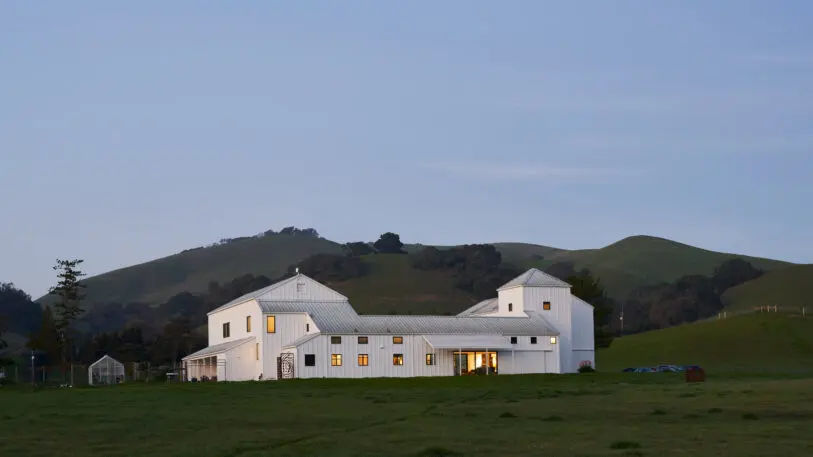
The future of the Institute
For now, the institute is a digital entity. But all of those objects will need to live somewhere. Demetrios and her team are currently operating out of the private Eames Ranch in Petaluma. In the future, there may be a physical space with exhibits and workshops.
As for what’s next for the institute, that’s a topic close to the heart of Gebbia, who has contributed unrestricted funding to the organization.
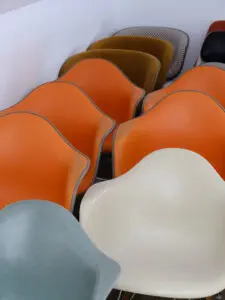
“I thought, I need to know who made that, where that came from. And that kicked open the door to these two brothers, Ray and Charles,” Gebbia says with a laugh. “Obviously, I eventually realized they were husband and wife.”
That moment set his life in motion, reoriented his path from studying art to design, and is, in this sense, directly responsible for the accessible home-sharing platform he built at Airbnb (and the billions of dollars of personal wealth he amassed as a result). For Gebbia, financially backing the Eames Institute is paying it forward. It’s his way of getting an anonymous orange book into the hands of tomorrow’s designers in hopes that they, too, can embrace some of the Eameses’ most important methodologies to build a better world. Gebbia says that he intends to continue funding the institute into the foreseeable future.
“Let’s just say Ray and Charles have been part of my life and will continue to be part of my life,” he says. “l’ll do whatever I can to help other people discover their lessons. I’m in it for the long-term.”
Recognize your brand’s excellence by applying to this year’s Brands That Matter Awards before the early-rate deadline, May 3.
